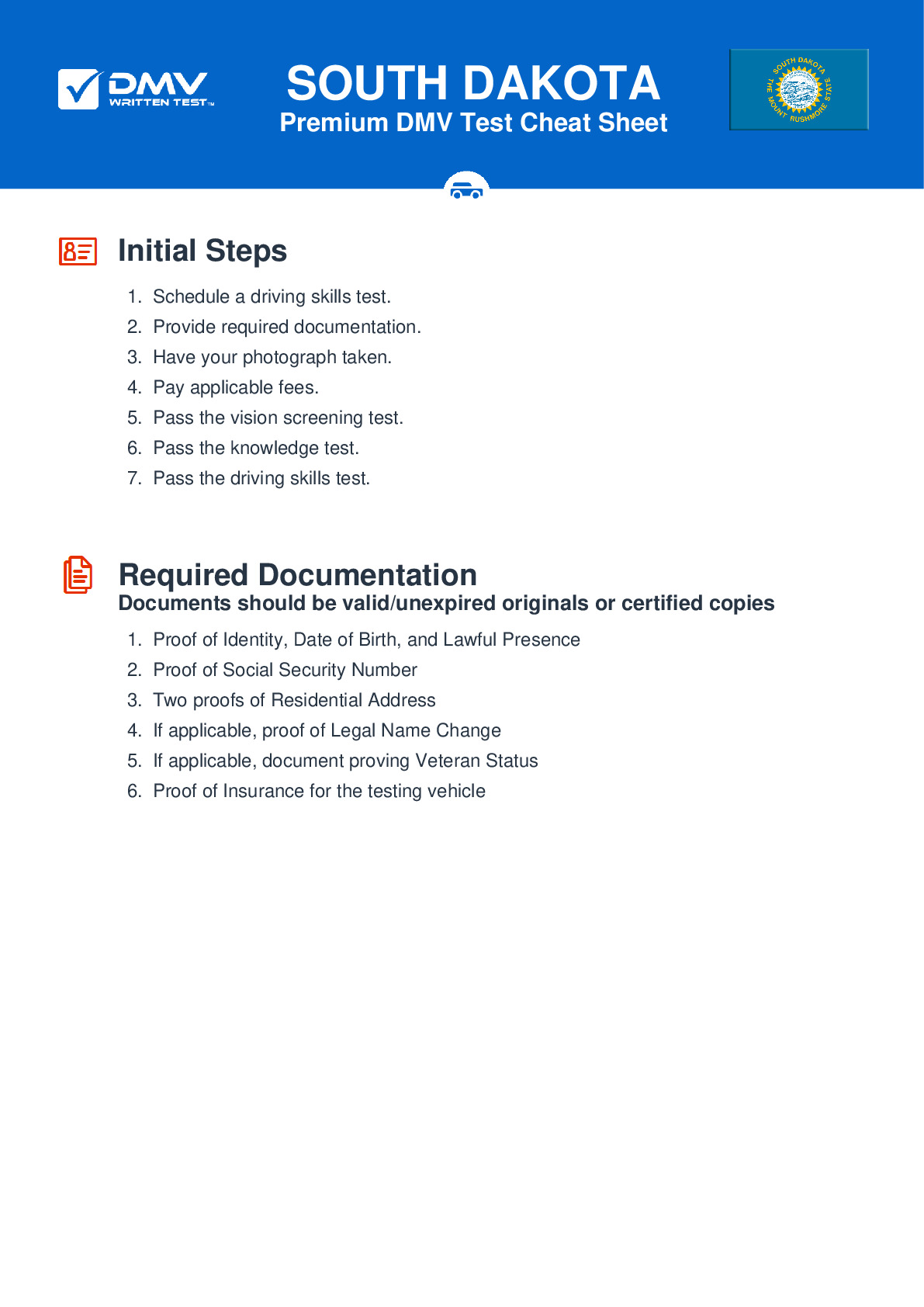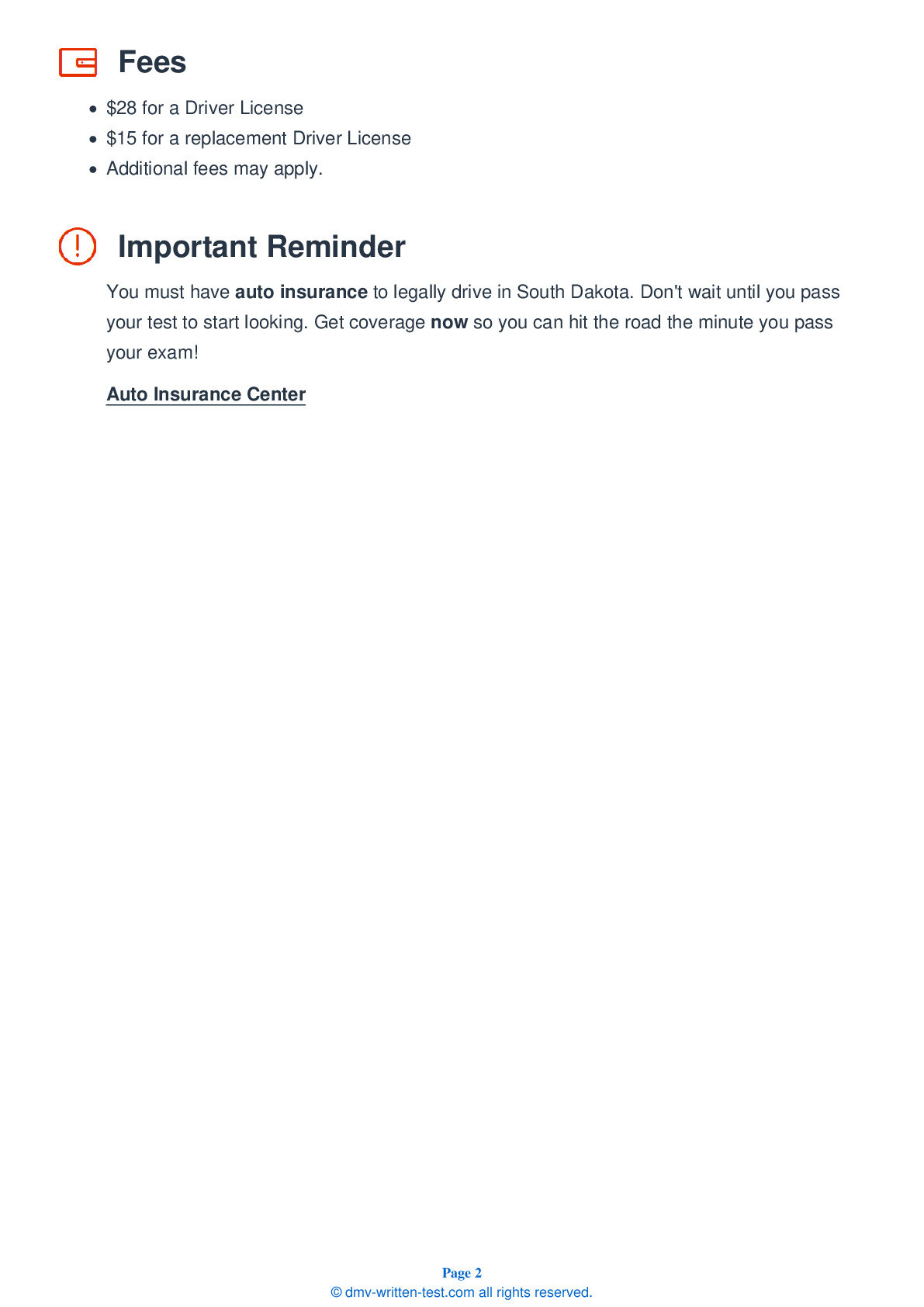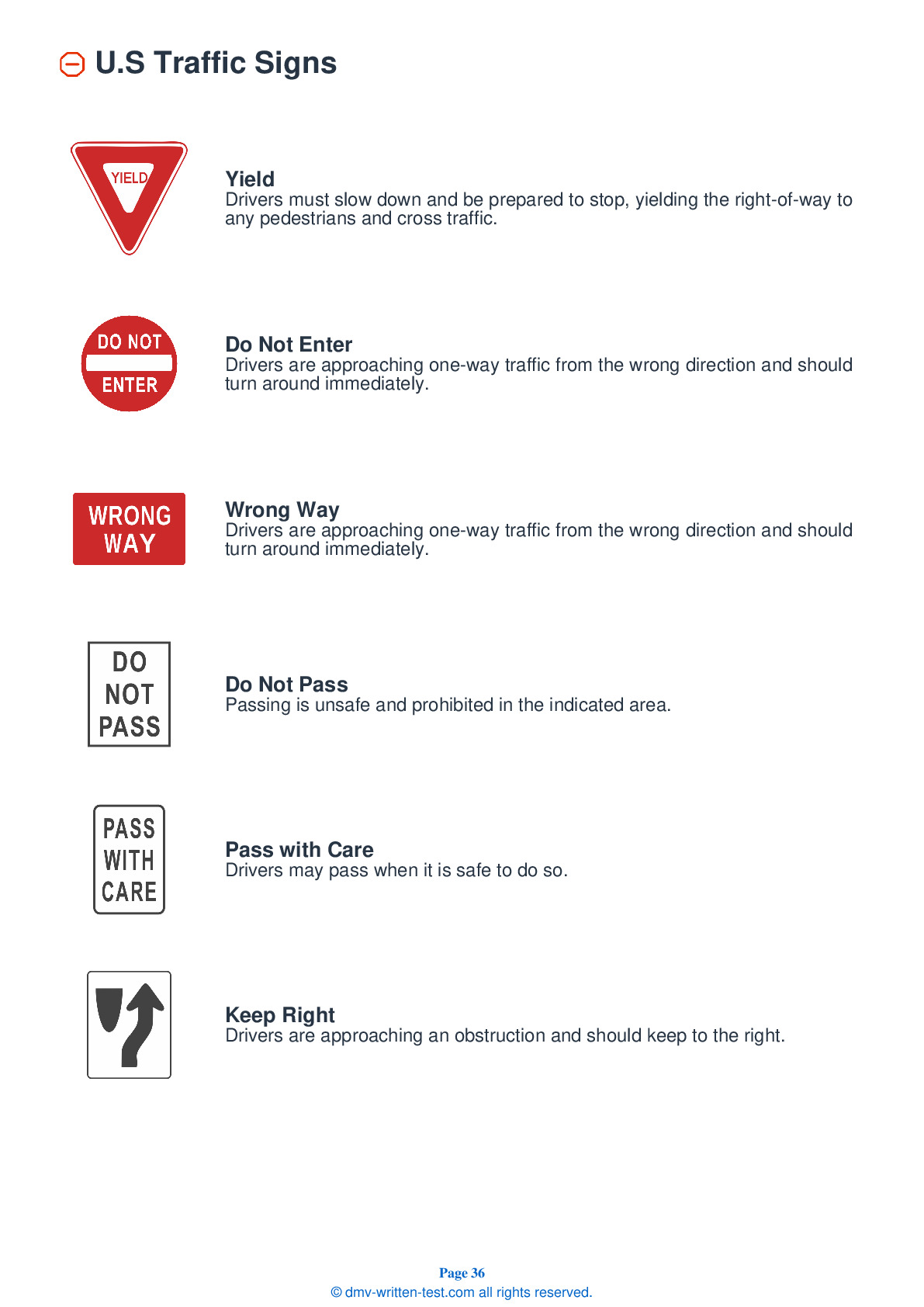2025 South Dakota Permit Test 13
The following questions are from real DMV written tests. These are some of the actual permit questions you will face in South Dakota. Each permit practice test question has three answer choices. Select one answer for each question and select "grade this section." You can find this button at the bottom of the drivers license quiz. For a complete list of questions and answers for South Dakota please visit https://cheat-sheets.dmv-written-test.com/en/south-dakota/car.
Number of Tests
Number of Question
Passing Score
1. If there is a deep puddle on the road ahead, you should:
Explanation
To prevent skidding on slippery surfaces, avoid especially slippery areas, such as ice patches, wet leaves, oil, or deep puddles. The safest surface for driving is a dry, solid surface.
2. After passing a vehicle, it is safe to return to your driving lane when:
Explanation
Before you return to your driving lane, be sure you are not dangerously close to the vehicle you have just passed. One way to do this is to look for the vehicle in your inside rearview mirror. When you can see both headlights in your rearview mirror, you may have enough room to return to your driving lane.
3. Construction zone signs are generally:
Explanation
All temporary signs in work zones have an orange background with black letters or symbols. These signs are found on the right side of the road, or on both the left and right sides if the roadway is a divided highway.
4. Which of the following statements about driving speed is true?
Explanation
As driving speeds increase, the chance of a fatality in the case of a collision increases. If you are going faster than 80 miles per hour, you have almost no chance of living through a crash. The speed you drive affects your stopping distance, so you should increase your following distance as you increase your speed.
5. If you are driving and a tire suddenly goes flat, you should:
Explanation
If a tire blows out or suddenly goes flat while you are driving, grip the steering wheel firmly and keep the vehicle aiming straight. Take your foot off the accelerator and do not brake. Allow the vehicle to slow by itself and use the brakes gently, but only if necessary. Pull off the road when it is safe to do so.
6. While driving at night, a vehicle coming toward you has its high beams on, making it hard for you to see the road ahead. You should:
Explanation
If an oncoming driver fails to dim their high beams, you should avoid looking directly at the headlights. Instead, look toward the right edge of your lane and watch the oncoming vehicle out of the corner of your eye.
7. This sign means:

Explanation
Warning signs are usually yellow with black markings. They alert you to conditions that are immediately ahead. This sign warns that the roadway is slippery when wet.
8. You reach an intersection with stop signs on all four corners at the same time as the driver on your left. Who has the right-of-way?
Explanation




